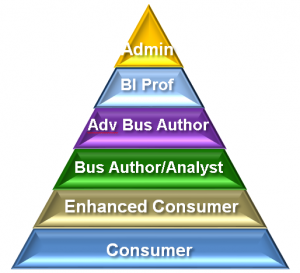Active Reports has been quite the buzz since its introduction. As more organizations move to Cognos 10 we have seen many seasoned report developers experiment with Active Reports. In an effort to shorten the learning curve I’m going to go over a few quick tips that I have found useful.
W hen talking to new or existing IBM Cognos customers, there often seems to be confusion around Cognos licensing. The new functionality in C10 adds to this complexity. In hope of shedding some light on this topic, this article will discuss the impact of C10 and the different roles. In a follow-up article next month we will cover “Authorized User” versus “PVU”.
hen talking to new or existing IBM Cognos customers, there often seems to be confusion around Cognos licensing. The new functionality in C10 adds to this complexity. In hope of shedding some light on this topic, this article will discuss the impact of C10 and the different roles. In a follow-up article next month we will cover “Authorized User” versus “PVU”.
What changes for C10?
There is technically no license cost for migrating from C8 to C10. However, in order to take advantage of much of the new user interfaces and visualizations available in C10 (e.g. Business Insight, Active Report), you may need to trade up to a higher user role. While many of the existing roles will carry forward in C10, there seems to be a conscious effort by IBM to consolidate and simplify the roles in C10. We will discuss the two most common roles: Enhanced Consumer and Advanced Business Author. We’ll also look at how an organization can protect their current investment in other roles. Read more
Inter-cube Feeders
In my previous month’s article on “Managing the Art of Feeders”, we reviewed the concept of using Skipcheck and Feeder functionality in standard TM1 rules. In this month’s article, we will discuss further enhancing a developer’s capability around writing rules within TM1 and review the concept of inter-cube feeders. While much of the functionality and capability found within TM1 rules is necessary to provide the desired end user result set, that does not mean that a developer should simple assume that all functionality is created equal. Inter-cube feeders, while often necessary, can have a significant impact on overall performance which should be taken into consideration before inclusion in a rule. Read more

